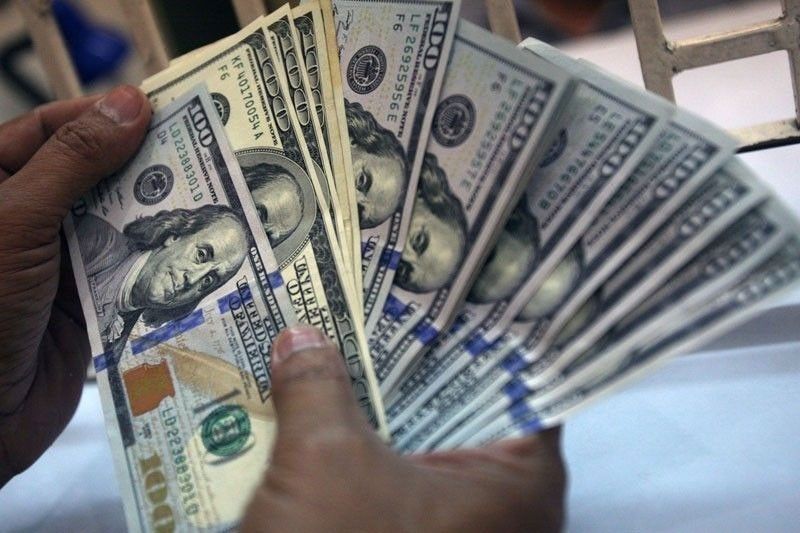Foreign debt hits $109.8 billion

MANILA, Philippines — The Philippines booked a double-digit rise in external debt to $109.75 billion in end March this year from $97.05 billion in the same month last year as the national government borrowed more to fund COVID-19 response measures and bankroll much needed infrastructure projects.
Outgoing Bangko Sentral ng Pilipinas Governor and incoming Finance Secretary Benjamin Diokno attributed the 13.1 percent year-on-year increase in the country’s debt stock to $16.4 billion in net availments, largely by the national government amounting to $12 billion and prior periods’ adjustments of $3.2 billion.
Meanwhile, the BSP said the transfer of Philippine debt papers from non-residents to residents of $5.1 billion as well as the negative foreign exchange revaluation of $1.8 billion partially offset the increase in the debt stock.
Quarter-on-quarter, Diokno said the external debt increased by 3.1 percent from the end 2021 level of $106.43 billion.
According to the BSP, the rise in the debt level during the first quarter was due to net availments of $3.5 billion, mainly by the national government and private non-banks.
From January to March, the national government borrowed $2.3 billion from official creditors to fund its COVID-19 pandemic response programs and infrastructure projects and raised $2.3 billion from the issuance of global bonds under its 2022 commercial borrowings program.
The recent issuance includes the debut of national government’s sustainability bond, which aims to finance climate change mitigation and adaptation projects, among others.
On the other hand, non-bank private sector borrowers sought external credit amounting to $995 million primarily to augment their working capital and finance their projects.
Prior periods’ adjustments of $1.7 billion further contributed to the increase in the debt stock, while the transfer of Philippine debt papers issued offshore from non-residents to residents of $1 billion and negative foreign exchange revaluation of $841 million tempered the rise in the debt stock.
The country’s external debt has been steadily rising from $73.1 billion in 2017, $78.96 billion in 2018, $83.62 billion in 2019, $98.49 billion in 2020, and $106.43 billion in 2021.
Despite the increase, Diokno said the country’s outstanding external debt remained at prudent levels as its ratio to the gross domestic product (GDP) stood at 27.5 percent in the first quarter of the year.
“The ratio remains one of the lowest as compared to other ASEAN member countries,” Diokno said.
Diokno said the country’s gross international reserves (GIR) level stood at $107.3 billion as of end March, equivalent to 7.7 times cover of the short-term debt.
The Philippines emerged from the pandemic-induced recession with a GDP growth of 5.7 percent last year, reversing the 9.6 percent contraction in 2020 as the economy stalled due to strict COVID-19 protocols and lockdown measures.
The rebound was sustained with a stronger-than-expected GDP expansion of 8.3 percent in the first quarter of the year.
Data showed the debt service ratio dropped to 4.1 percent from 14.3 percent due to scheduled lower repayments accompanied by higher receipts.
Data showed public sector external debt rose by 5.5 percent to $67.4 billion in end March from $63.9 billion in end December, accounting for 61.4 percent of the country’s foreign debt.
The national government accounted for 87.3 percent or $58.8 billion of the total public sector debt, while government-owned and controlled corporations, government financial institutions and the central bank cornered the remaining 12.7 percent or $8.5 billion.
Meanwhile, the foreign obligations of private companies slightly declined to $42.4 billion in end March from $42.5 billion in end December for a share of 38.6 percent.
According to the BSP, major creditor countries include Japan with $14.5 billion followed by the United Kingdom with $3.7 billion, and the Netherlands with $2.9 billion.
Borrowings from multilateral lending institutions and bilateral creditors emerged as the largest share of 37.8 percent, followed by loans in the form of bonds or notes had the largest share with 34.6 percent, and obligations to foreign banks and other financial institutions with 21.5 percent.
The remaining 6.1 percent was owed to other creditors such as suppliers and exporters.
In terms of currency mix, the country’s debt stock remained largely denominated in US dollar with 55.4 percent and Japanese yen with 9.2 percent. US dollar-denominated multi-currency loans from the World Bank and Asian Development Bank represented 20.8 percent.
Data showed the maturity profile of the country’s external debt remained predominantly medium and long-term in nature with original maturities longer than one year with share to total at 87.2 percent, while short-term accounts with maturities of up to one year comprised the 12.8 percent balance.
“This means that foreign exchange requirements for debt payments are well spread out and, thus, manageable,” Diokno said.
The national government borrows heavily from foreign and domestic creditors to finance the country’s budget deficit as it spends more than what it actually earns.
- Latest
- Trending































